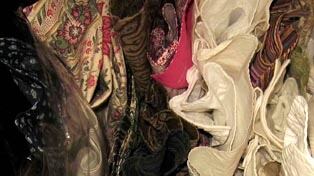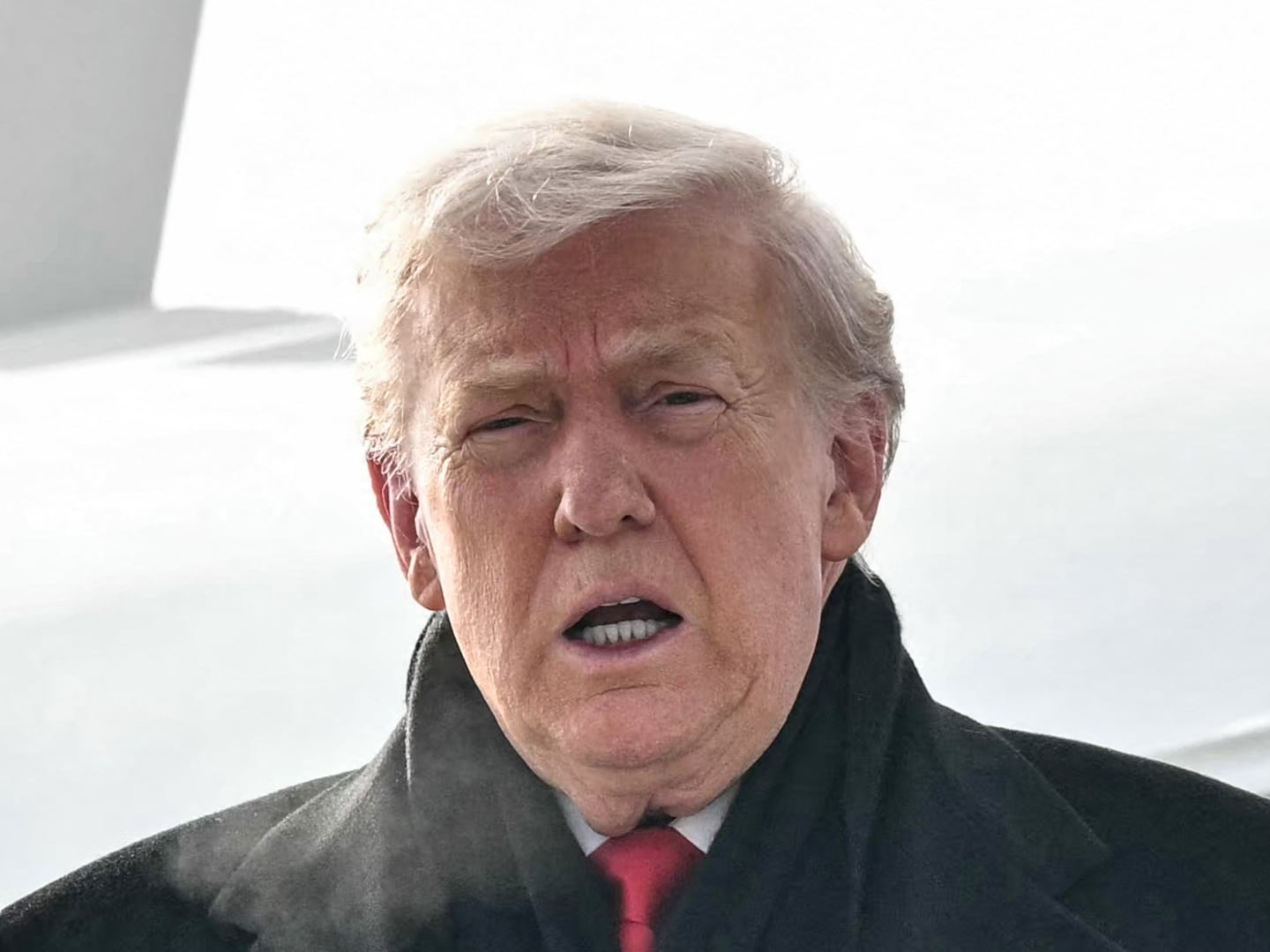Neke Carson photographs the closets of some famous friends—John Waters, Debbie Harry, Todd Oldham—and provides a glimpse into their souls. And up their skirts.
Neke Carson's first closet portrait was taken without his subject's consent. When Debbie Ullman, a well-known graphic designer and longtime New York friend, asked Carson to babysit her ancient pitbull Joey, she unwittingly became his muse. "I took some pictures of her sink, which ended up in a show at the Warhol Museum in Pittsburgh, Eyeball Portraits and Beyond,” Carson says. “After I finished taking pictures of every single thing in the apartment, the only thing left was the closets."
So Carson opened the door, placed his camera on the floor, and took a portrait of Ullman’s blouses and dresses. He liked the result so much that he asked some of his friends—including Debbie Harry, John Waters, Todd Oldham, and myself—if he could photograph inside theirs. "I'm not in the closet myself. It's just the camera," the 63-year-old Carson explains. "If I get deeper into the closet, they just have to trust me. I might close the door because sunlight messes with the flash, but I'm not looking through the lens. I don't lie on the closet floor looking up. I have very little to do with it."
Click Image Below to View Our Gallery

Carson's body of work—which includes whirring "apparitions," dust sculptures, traditional oil paintings, pencil drawings reminiscent of W. Heath Robinson's contraptions, and the infamous Portrait of Andy Warhol created in 1972 at the Factory—makes me question his naïve demeanor.
It's the duty of innocence to confuse and beguile. The most erotic image in Carson's series of closet portraits turns out to be a Boy Scout jacket from the 1950s. In the closet, innocent—even banal—objects acquire a lurid appearance.
Many of Carson’s subjects have attempted to complicate matters by tidying up for him. "I tell them, 'No, no, no, I don't want the Hollywood version of your closet.'" Truth be told, I sneaked in before he arrived because my shoes needed taming, but touched nothing else. A woman who glimpsed the result told me, "He photographed your soul." Another friend studying the same portrait experienced the voyeurism in a more basic way, evoking how it feels to have a man in my closet.
So was Carson capturing my soul or just looking up my skirt?
In the closet, innocent—even banal—objects acquire a lurid appearance.
If you have any common sense, you don't want just anyone gazing up your skirt or into your soul, but it's flattering when they try. The paranoid are a vain, vigilant race, and that's one reason such personalities get drawn toward the limelight. This reinforces their discomfort, but many who claim to be paranoid because they've been traumatized by public life are in denial about cause and effect.
That relationship between vanity and privacy is central to Carson's Portraits from the Closet series, now running through August 15 in New York at John McWhinnie @ Glenn Horowitz Bookseller, but there's another component.
In the 1980s, Carson wrote about ''the physics of fashion" for The Village Voice. Throughout the history of fashion, there have been two looks, he argued: the invulnerable (such as a coat of armor, a cat suit or double-breasted jacket) and the vulnerable. Think ruffles, Peter Pan collars, and flouncy skirts, all heading in one direction—turning your clothes inside out.
If we wore our clothes inside out, human beings would eventually achieve world peace because the entire human population would look so damn vulnerable, floppy and clownish, went Carson's theory. This hasn't happened yet but Carson continued to refine his idea
In 1995, he persuaded clothing designers to sketch for Mirabella magazine their visions for a new kind of hospital gown. He recalls Todd Oldham saying that doctors dress "in a commanding glamorous way, while patients are dressed for surrender. Where is the glamour for the patient?"
The closet portraits reflect a lifelong preoccupation with "fashion physics" but, after Carson graduated from Rhode Island School of Design in 1968 and arrived in New York, his debut sculpture didn't speak directly to fashion. "I had a Plexiglas sculpture called Moon Man Fountain that was about 8 feet by 7, big enough to contain two people. It was in my workspace on the RISD campus. I came to New York and showed it to Andy Warhol. I don't know another artist in New York City who would say 'Bring your gigantic work and put it in my space.' That's unheard of, but Andy allowed me to keep it in his loft until I found a gallery."
Carson has some useful advice for emerging artists arriving in post-Warhol New York. "I always thought you had to be as far ahead as possible, but if you're too far ahead, like Buckminster Fuller or Thelonious Monk, it takes too long for people to catch up. You really need to be three years ahead and two years behind. Then you'll be right on time."
Plus: Check out Art Beast, for galleries, interviews with artists, and photos from the hottest parties.
Tracy Quan's latest novel is Diary of a Jetsetting Call Girl, set in Provence and praised in The Nation as a "deft account of occupational rigors and anxieties before the crash." Tracy's debut, Diary of a Manhattan Call Girl, and the sequel, Diary of a Married Call Girl, are international bestsellers. A regular columnist for The Guardian, she has written for many publications including Cosmopolitan, The Financial Times, and The New York Times.






